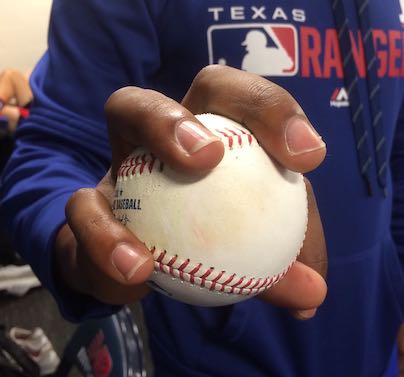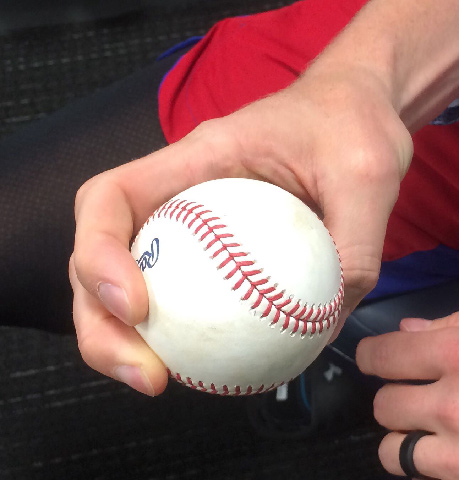Brandon Belt isn’t having a particularly good year. For once, I don’t just mean that his counting numbers are unimpressive; he’s long been a player whose production has outstripped his reputation, as light-slugging first basemen tend to be, and playing in San Francisco’s extreme scoring environment hasn’t helped. From 2012 to 2018, he produced 3.4 WAR per 600 plate appearances, All-Star-level production, despite never really hitting for power or average.
This year, his defense has dragged him down near replacement level (note to the Giants: Belt really shouldn’t play the outfield), but his hitting isn’t up to his usual standards either (a 107 wRC+ that equals last year for his worst full-season rate). Even as Belt’s production wanes, though, he’s actually getting more fun to watch. Why? Well, you never know when he’s going to drop down a bunt, regardless of situation, and bunting for a hit is among the most fun plays in baseball.
When you picture the ideal player to shift against, Brandon Belt is almost a perfect match. He’s left-handed, pulls a ton of his groundballs, and isn’t fast enough that a second baseman in shallow right field might not have time to throw him out on a grounder. When shifting exploded in frequency from 2014 to 2016, Belt was the kind of player who gave teams a reason to do it. In 2015, 54% of the balls he put in play were against a shift, up from 14% in 2013. By 2016, that number climbed to 78%, and it’s bounced around 80% ever since.
At first, Belt had no clear counter. By the end of 2016, he’d bunted only five times in his major league career, going 2-4 with a sacrifice. Teams shifted on him with impunity, and Belt lashed grounders into the shift. His groundball rate decreased, but that’s not a way to punish shifting; it’s merely a way to ignore it. He tried bunting more in 2017, but it was only middlingly effective — he finished 3-6 on the year, and two of those singles were bang-bang plays; he easily could have been 1-6. “Bunt against the shift” is a great idea in theory, but Brandon Belt wasn’t doing it well enough in practice.
Bunting skill isn’t fixed, though, and Belt proved it. His bunts in 2018 were crisper, better-executed, and better-aimed. Take a look at this surgical strike against the Padres:
Freddy Galvis’s kick-stop drives the point home: there’s no reason to bother fielding that ball. For the season, Belt went 4-6 on bunts, and none of the singles even drew a throw. That .667 on-base percentage will do, even if he did embarrass himself in a Bay Area tilt:
Hey, they can’t all be perfect. That’s no different than a grounder into the shift, even if it probably feels worse.
Remember all the way back in the previous paragraph where I said they can’t all be perfect? Well, I lied. Brandon Belt is perfect on bunts this year, and he’s getting increasingly audacious. He’ll bunt in situations where a runner is valuable, sure. Leading off an inning against a decent reliever in a close game? That’s a great time to get a runner on first, and the shift is just asking for it. He doesn’t even hesitate:
That’s too obvious, though. Brandon Belt isn’t about bunting only in situations where a runner on first is most important. He’s in it for the love of the bunt. 1-1 count with two outs and a one-run lead? Sure, Belt will bunt on you:
Are runners on first valuable with two outs? Not at all! Still, Belt’s feeling it. Put away your run expectancy tables and feel the magic. Sometimes you just have to bunt.
How about against an Orioles righty in Camden Yards, a situation where Belt is probably as likely to hit a home run in a single plate appearance as he’ll ever be? Oh yeah, absolutely:
Keep your home runs; Belt will take his not-even-guaranteed base and be happy with it. The Giants hit three long balls in this game. Brandon Crawford, he of the .141 career ISO and 8.7% home run per fly ball rate, hit two home runs. Lefties batting against Oriole righties are in the best possible situation to succeed. Gabriel Ynoa has a 6.45 FIP and 6.75 ERA this year, for crying out loud! Belt doesn’t care, though. He’s bunting.
If you think those last two bunts are questionable, his latest one takes the cake. With the bases empty, a bunt single and a walk are exactly the same. Honestly, a bunt single and a walk are the same almost all the time, but especially with the bases empty. 3-0 count, pitch that might well be called a ball? Bunts away!
Bunts on 3-0 are rare, because they’re ridiculous. 3-0 counts often end in walks, without the hassle of having to connect on a bunt and reach base safely. When Matt Carpenter did it last year, I looked into it and found that he was only the third player to get a fair bunt down with a 3-0 count and the bases empty in the last 10 years. Well, that statistic is now outdated, because Brandon Belt is the fourth.
Think about what bunting on 3-0 entails. A 3-0 count is the best place a hitter could ever find himself. After 3-0 counts this year, major league hitters as a whole walk 60.6% of the time. They get on base 72.8% of the time. On the rare occasion where they don’t walk, they often hit home runs — 5% of non-walk at-bats that hit 3-0 end in a dinger. Literally every offensive stat is improved; batters have posted a .233 ISO (against .180 ISO overall), a .322 BABIP (.296 overall), and a .309 batting average. Brandon Belt doesn’t care. He just wants to bunt.
At this point, I think we can say that Brandon Belt is drunk with bunt power. In a twist, though, that isn’t really new. When Cody Bellinger bunted on 3-0 in 2017, Jeff Sullivan investigated and found a 3-0 bunt attempt from Belt that went foul in May 2017. Brandon Belt wasn’t even a good bunter in 2017! That bunt rolled foul, and it might be good that it did; the Dodgers weren’t particularly over-shifted. He just felt like bunting.
Hittable righties, favorable counts, spots where a runner on first isn’t all that valuable? That’s all irrelevant. Brandon Belt sees an opening, and he attacks. It’s not going to stop teams from shifting against him — he’s grounded into a shift 41 times this year, which means the shift is saving more in grounders than it gives back in bunt singles. Still, if you’re playing against Belt, maybe keep your third baseman close to home until the count gets to two strikes. Honestly, maybe leave him there with two strikes, too. Belt hasn’t attempted a bunt with two strikes yet in his career, but at the rate he’s turning bizarre situations into bunt singles, it’s only a matter of time.


